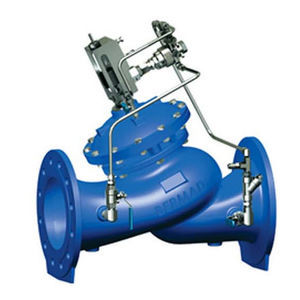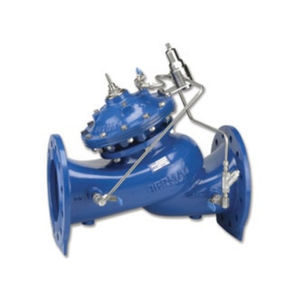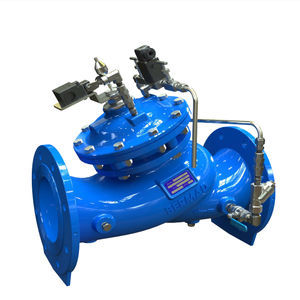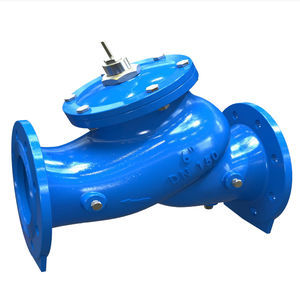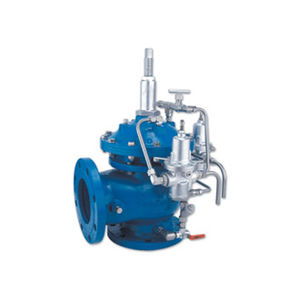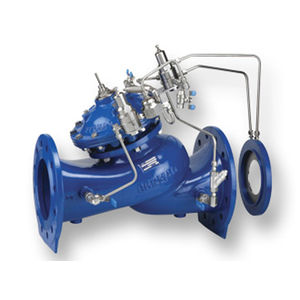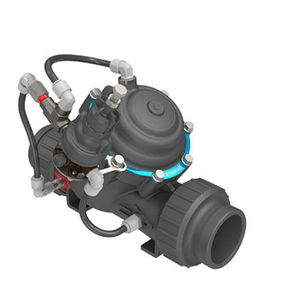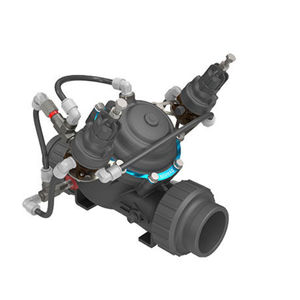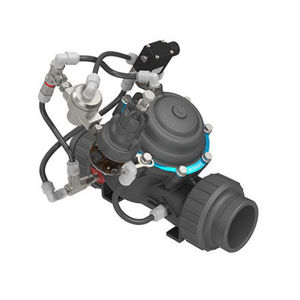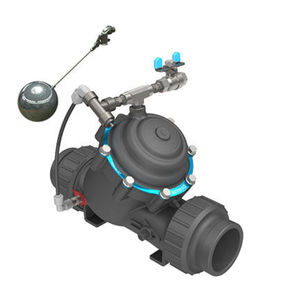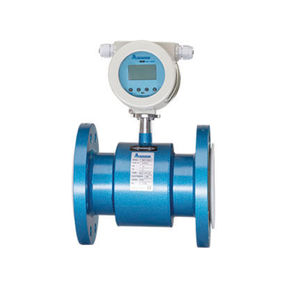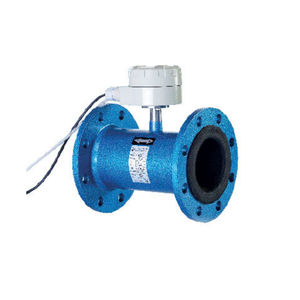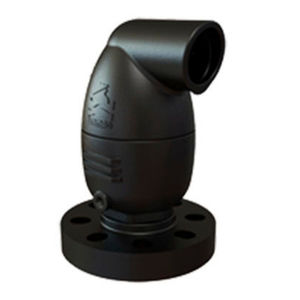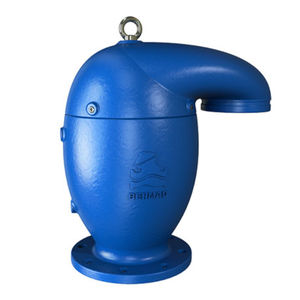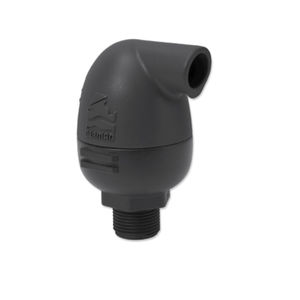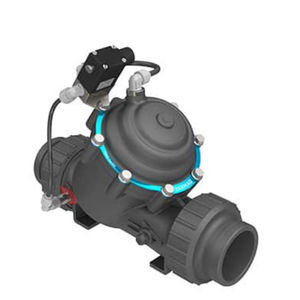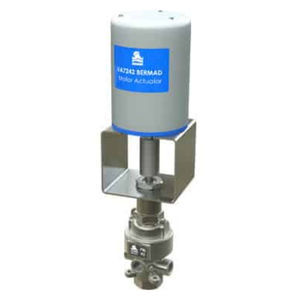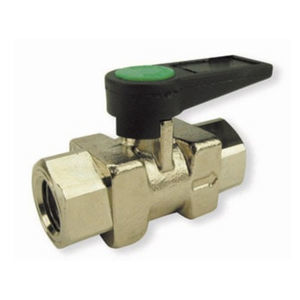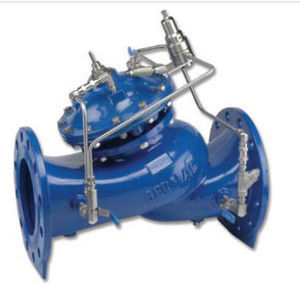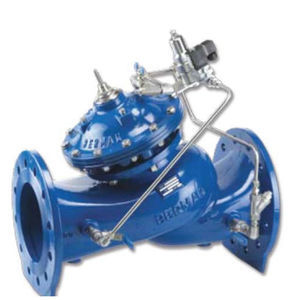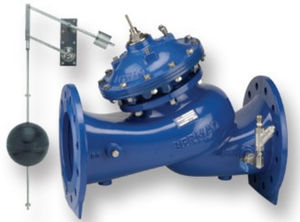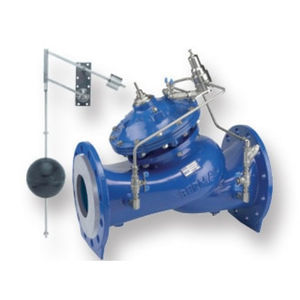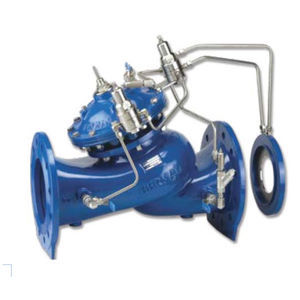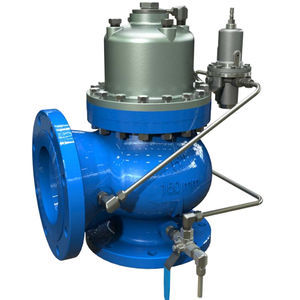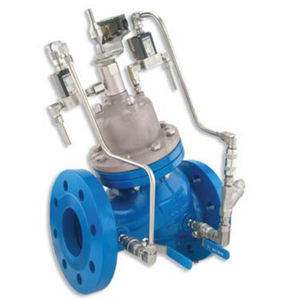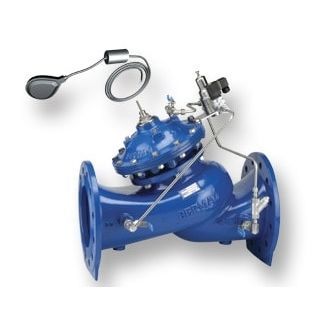
- Hydraulics - Pneumatics
- Valve
- Diaphragm valve
- BERMAD CS Ltd

- Company
- Products
- Catalogs
- News & Trends
- Exhibitions
Diaphragm valve WW-753-65hydraulically-operatedfloatadjustment
Add to favorites
Compare this product
Characteristics
- Type
- diaphragm
- Operation
- hydraulically-operated, float
- Function
- adjustment, level control, regulating
- Applications
- for tank
- Associated function
- for filling applications
- Other characteristics
- normally open, in-line, emergency
- DN
Min.: 40 mm
(1.575 in)Max.: 350 mm
(13.78 in)
Description
The Model 753-65 Level Control and Pressure Sustaining Valve with Bi-Level Electric Float is a hydraulically operated diaphragm actuated control valve that controls reservoir filling in response to an electric signal. The valve opens at pre-set low level and shuts off at pre-set high level. During filling, it sustains minimum upstream pressure, regardless of fluctuating flow or reservoir level.
PRODUCT FEATURES & BENEFITS
Line pressure driven – Independent operation
Bi-Level electric float switch
On/off service
Low cavitation damage
No hydraulic sensing tubes
Simplified float installation and setting
Reservoir inherent refreshing
Solenoid controlled
Low power consumption
Normally Open or Normally Closed main valve
Double chamber
Moderated valve reaction
Protected diaphragm
In-line serviceable – Easy maintenance
Flexible design – Easy addition of features
Balanced seal disk – High relief flow capacity
TYPICAL PRODUCT APPLICATIONS
Typical Applications
Level Control and Pressure Sustaining
In this elevated reservoir system, pressure to consumers is prioritized over reservoir filling by adding the pressure sustaining feature to the Model 750-65 Level Control Valve, thereby modifying it to become the Model 753-65 Level Control and Pressure Sustaining Valve.
Catalogs
No catalogs are available for this product.
See all of BERMAD CS Ltd‘s catalogsRelated Searches
- Valve
- Hand valve
- Control valve
- Stainless steel valve
- Ball valve
- Water valve
- Pneumatic valve
- Electrically operated valve
- Valve with flange
- Regulating valve
- Stop valve
- Lever control valve
- Flap valve
- Non-return valve
- Electric valve
- ISO valve
- Normally closed solenoid valve
- 2-way solenoid valve
- Pneumatically-operated valve
- Direct-operated solenoid valve
*Prices are pre-tax. They exclude delivery charges and customs duties and do not include additional charges for installation or activation options. Prices are indicative only and may vary by country, with changes to the cost of raw materials and exchange rates.


